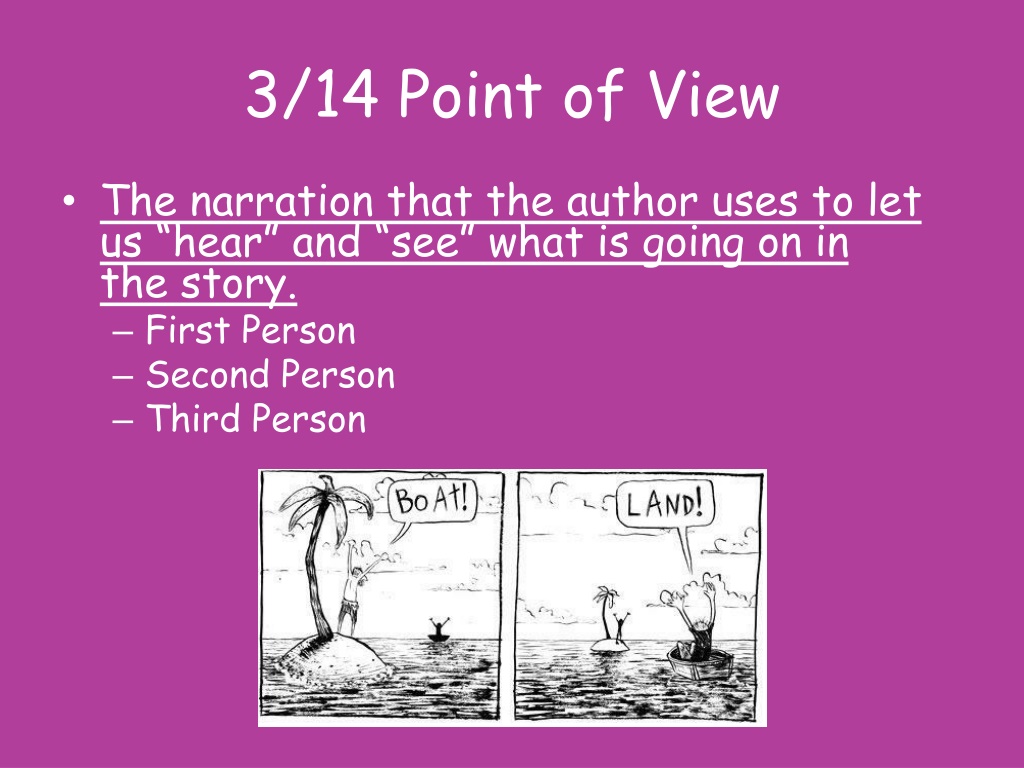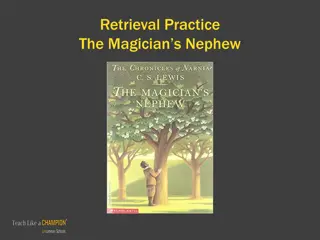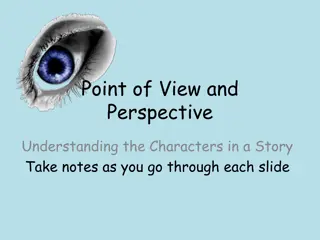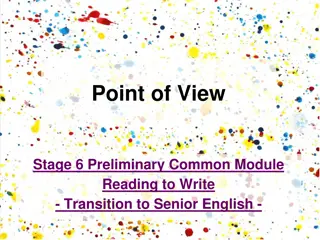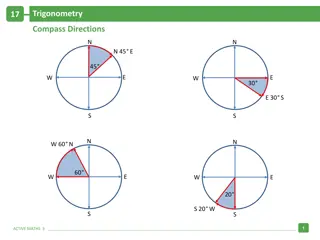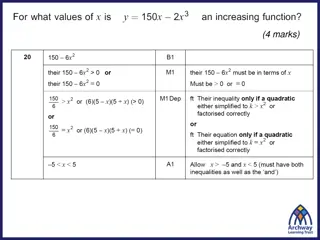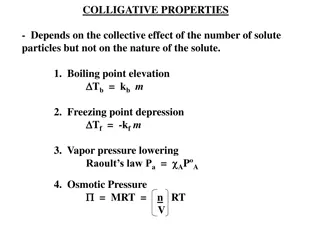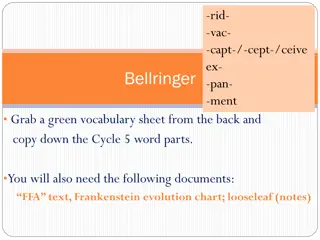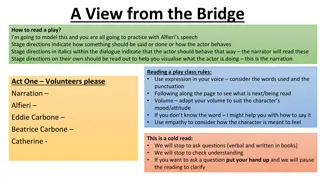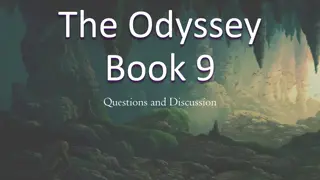Understanding Point of View in Narration
Point of view (POV) in storytelling plays a crucial role in how readers perceive and engage with a story. This content explains the three main types of POV - First Person, Second Person (rarely used), and Third Person (including Omniscient, Limited, and Objective). Each POV brings a unique perspective and level of insight into characters' thoughts and emotions, shaping the narrative in different ways.
Download Presentation

Please find below an Image/Link to download the presentation.
The content on the website is provided AS IS for your information and personal use only. It may not be sold, licensed, or shared on other websites without obtaining consent from the author. Download presentation by click this link. If you encounter any issues during the download, it is possible that the publisher has removed the file from their server.
E N D
Presentation Transcript
3/14 Point of View The narration that the author uses to let us hear and see what is going on in the story. First Person Second Person Third Person http://3.bp.blogspot.com/-KvTeVgkPzP0/VYZ3DlbzHWI/AAAAAAAABrY/KO19y3mQx4s/s1600/point%2Bof%2Bview.jpg
First Person POV The narrator is in the story and refers to him/herself. I, me, we, us, our, my Example: My name is Percy Jackson. I m 12 years old. Until a few months ago, I was a boarding student at Yancy Academy, a private school for troubled kids in upstate New York. Am I a troubled kid? Yeah. You could say that.
Second Person POV Second person point of view employs the pronoun you and puts the reader directly into the story. Almost never used in literature Example: Sometimes you cannot clearly discern between anger and frustration.
Third Person POV The narrator is telling a story about other people. Narrator will use words like: He, she, him, her, they, them, their, character s names. Three types of Third Person POV: Omniscient, Limited, and Objective
Third Person Omniscient The narrator knows all of the thoughts and feelings of the characters Omni=All and Scient=Knowing Example: Tony thought that Erika was lying, but he still wanted to believe that she had a good reason for doing so. On the other hand, Samantha believed that Erika was lying and felt jealous about the fact that Tony wanted to think well of the other girl at all.
Third Person Limited A narrator who is confined to what is experienced by a single character or a limited number of characters. Example: "Ouch! That hurt," Karen yelled. Jan glanced back and grinned. "Oh, I'm sorry, was that your foot? Karen glared at Jan's back as he ran away from her, plotting how she would pay him back.
Third Person Objective Narrator does not reveal ANY character s thoughts and feelings. Only dialogue and actions are revealed. Example: She arrived panting at the bus stop when the bus was already long gone. She looked at her watch and swore. "Darn Mondays! She sighed and walked along the sidewalk in the direction of her office building.
How to identify POV Check for First or Third POV, Who is telling the story Focus on the NARRATION in the story! Ignore the DIALOGUE http://mostlymystery.com/wp/wp-content/uploads/2014/03/Point-of-View1.png
Review Read the following passages, determine the POV, and then explain why you identified that POV. Class will review the first two scenarios together. Extension Activity: Choose 3 different POV s and write a short passage for each on the back page of your packet. Identify each POV that you have chosen
Wrap it up Complete packet and turn it in tomorrow! Pop Quiz 5 on Thursday Notebook check on Thursday.
